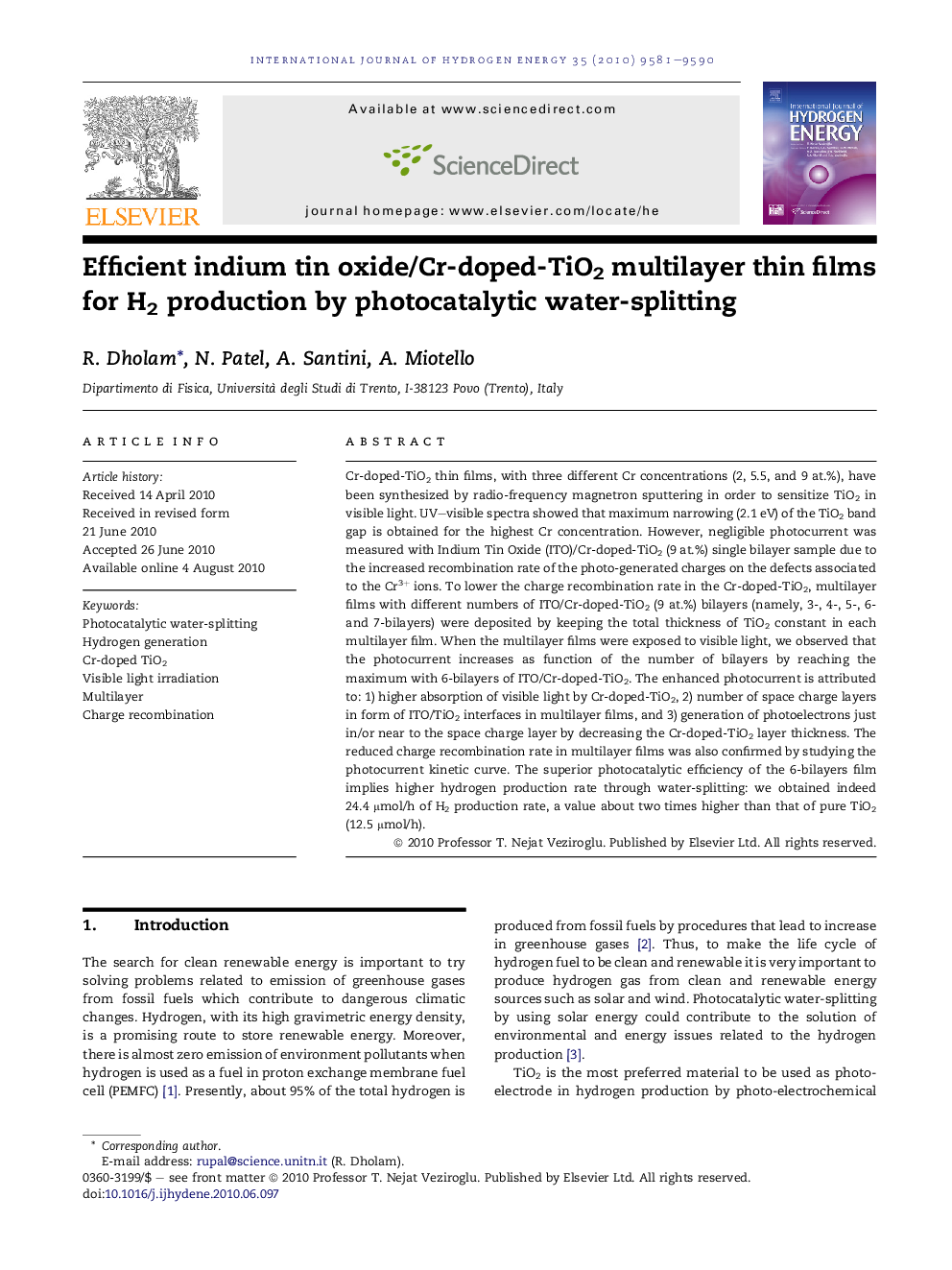| کد مقاله | کد نشریه | سال انتشار | مقاله انگلیسی | نسخه تمام متن |
|---|---|---|---|---|
| 1280247 | 1497599 | 2010 | 10 صفحه PDF | دانلود رایگان |

Cr-doped-TiO2 thin films, with three different Cr concentrations (2, 5.5, and 9 at.%), have been synthesized by radio-frequency magnetron sputtering in order to sensitize TiO2 in visible light. UV–visible spectra showed that maximum narrowing (2.1 eV) of the TiO2 band gap is obtained for the highest Cr concentration. However, negligible photocurrent was measured with Indium Tin Oxide (ITO)/Cr-doped-TiO2 (9 at.%) single bilayer sample due to the increased recombination rate of the photo-generated charges on the defects associated to the Cr3+ ions. To lower the charge recombination rate in the Cr-doped-TiO2, multilayer films with different numbers of ITO/Cr-doped-TiO2 (9 at.%) bilayers (namely, 3-, 4-, 5-, 6- and 7-bilayers) were deposited by keeping the total thickness of TiO2 constant in each multilayer film. When the multilayer films were exposed to visible light, we observed that the photocurrent increases as function of the number of bilayers by reaching the maximum with 6-bilayers of ITO/Cr-doped-TiO2. The enhanced photocurrent is attributed to: 1) higher absorption of visible light by Cr-doped-TiO2, 2) number of space charge layers in form of ITO/TiO2 interfaces in multilayer films, and 3) generation of photoelectrons just in/or near to the space charge layer by decreasing the Cr-doped-TiO2 layer thickness. The reduced charge recombination rate in multilayer films was also confirmed by studying the photocurrent kinetic curve. The superior photocatalytic efficiency of the 6-bilayers film implies higher hydrogen production rate through water-splitting: we obtained indeed 24.4 μmol/h of H2 production rate, a value about two times higher than that of pure TiO2 (12.5 μmol/h).
Journal: International Journal of Hydrogen Energy - Volume 35, Issue 18, September 2010, Pages 9581–9590